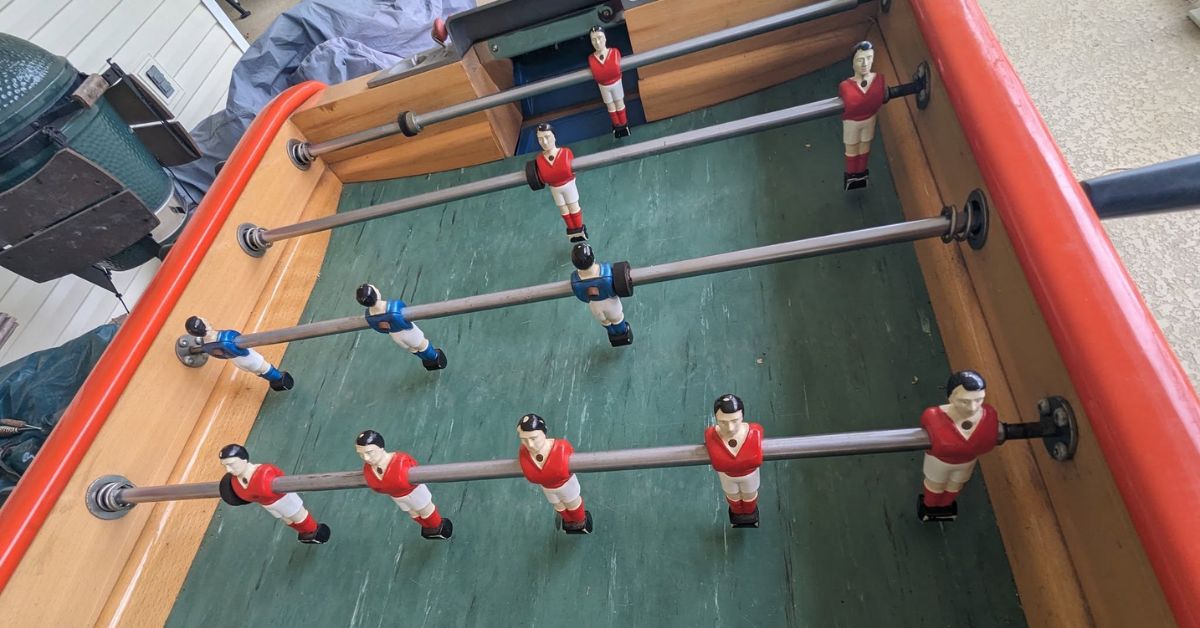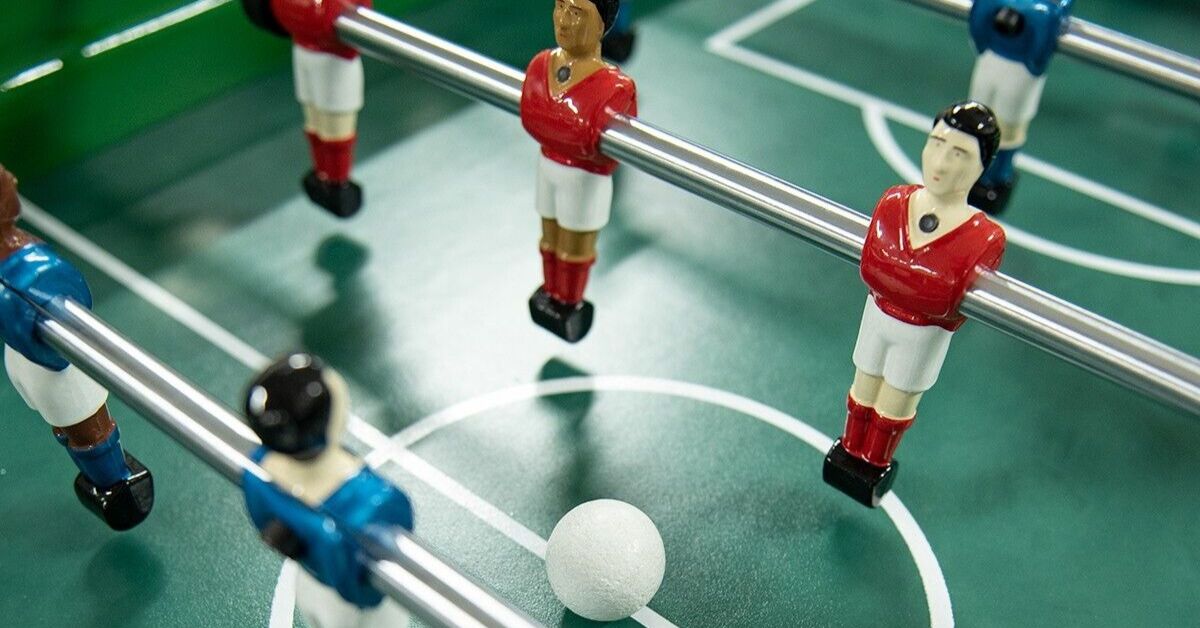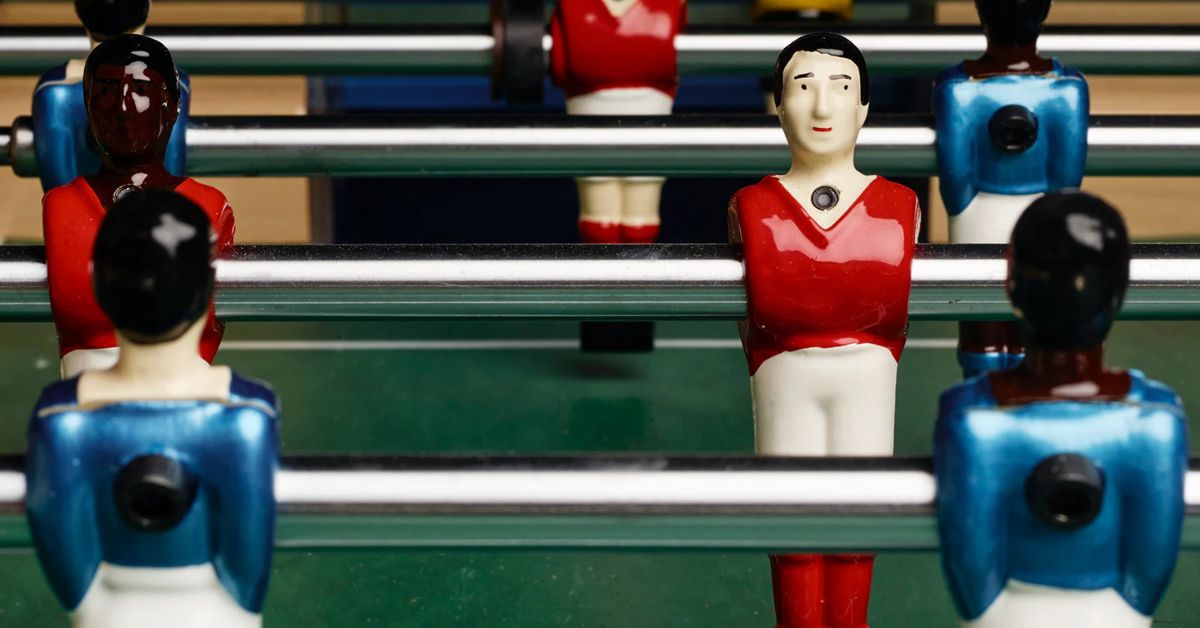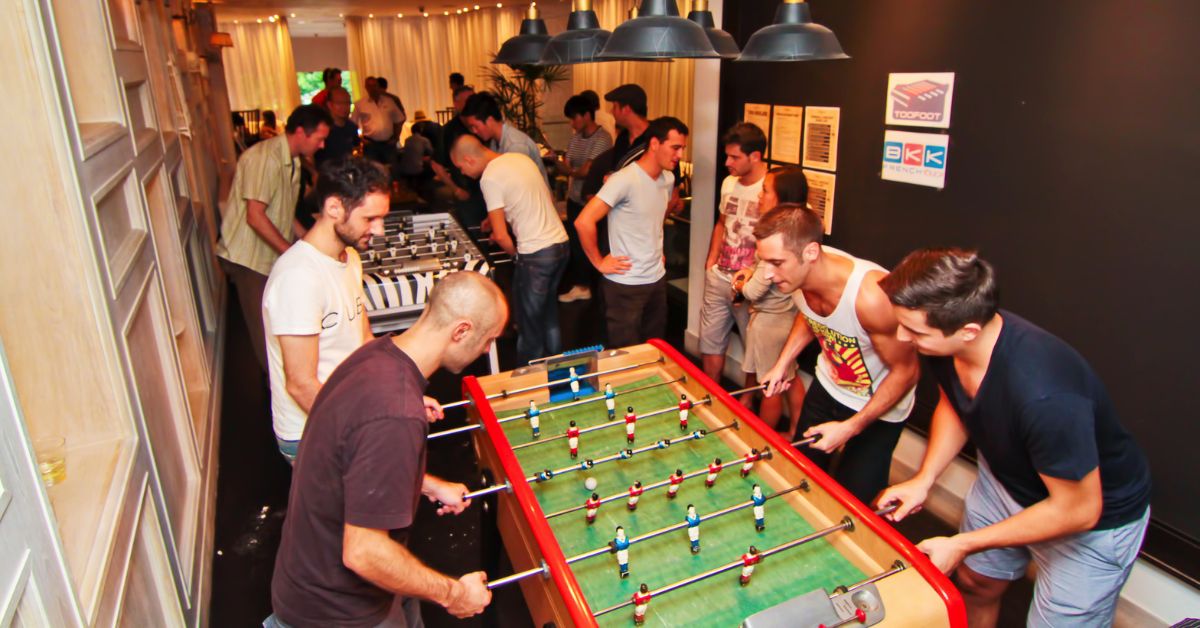Foosball, also known as table soccer, is a game that delights players around the world with its fast-paced action and competitive spirit. Surprisingly, what began as a parlor game has grown into a beloved pastime, complete with tournaments attracting serious contenders.
From its origins to its quirky trivia, foosball is more than just a tabletop diversion; it’s a fascinating blend of strategy, skill, and maybe a bit of luck too. Let’s explore some fun facts about foosball that few people know and discover why it’s still a popular game today.
Mysterious Origins
Despite the game’s widespread appeal, the exact origins of foosball remain a bit of a mystery. Some people believe that Lucien Rosengart first invented the game in the late 19th century in Europe. There’s evidence to support claims from multiple countries, including Germany, where it was a way to keep soccer fans entertained during the off-season. Others argue for France, where the game was known as “baby-foot,” adding to the playful intrigue surrounding its history.
Regardless of its birthplace, foosball rapidly gained popularity because it captured the essence of soccer with a twist and fit comfortably into homes and pubs. As the game evolved, so did its innovations, such as tournament-standard tables and countless regional variations, keeping foosball a constantly exciting challenge for players worldwide.
The First Patent
The first known patent for a foosball table dates back to 1921, credited to Harold Searles Thornton in the United Kingdom. Thornton devised the game to bring the thrill of soccer indoors, using simple hardware that closely replicated the dynamics of the real sport. The design was refreshingly straightforward: players controlled rods with miniature soccer figures attached, twisting and turning them to strike the ball into the opponent’s goal.
This innovation laid the groundwork for the modern game we know today, and it didn’t take long for foosball to spread to other parts of the world. Thornton’s invention was charmingly innovative for its time. It demonstrated how a few cleverly arranged components could recreate the excitement of a soccer match on a tabletop—all without leaving the cozy confines of one’s home.
The Foosball World Cup

Foosball isn’t just a casual pastime—it’s also a competitive sport with its own championship! The Foosball World Cup is a prestigious event that draws players from across the globe who vie for the title of world champion in a series of intense matches. The International Table Soccer Federation (ITSF) organizes this tournament, ensuring fair play and high-level competition.
Enthusiasts celebrate the diversity of playing styles showcased at the Foosball World Cup, from rapid-fire offense to strategic defense. The tournament is not only a battleground for talented players but also a vibrant gathering of foosball fans who share a passion for the twist and thrill of the rods. It’s a testament to how foosball has grown from simple entertainment to a respected sport with a global following.
If you’re really looking to immerse yourself in the world of champions, Bonzini USA’s B90 Competition foosball table is licensed by the ITSF! You’ll see this model as one of the official tables in the World Championship games.
The Longest Foosball Marathon
Foosball fans never shy away from a challenge, and this was proven when a group of dedicated players set the record for the longest foosball marathon. This amazing feat took place over the span of more than 61 grueling hours. Participants traded in sleep for spins and goals, showing off their endurance and love for the game.
The event attracted attention from across the foosball community, highlighting the sense of camaraderie and commitment that characterizes this unique sport. This marathon showcased the stamina of its players and firmly placed foosball on the map as an activity that people are genuinely passionate about.
Celebrity Foosball Enthusiasts
One of the most fun facts about foosball that few people know is the number of ardent celebrity fans the game has accrued. Actors like Chris Pratt are known to enjoy foosball, often challenging friends and colleagues to spirited matches during downtime. In the world of royalty, Prince William is even known to enjoy a match or two, showing how the game transcends classes and cultures.
Famous musicians such as Shakira and the band members of Depeche Mode also find foosball to be a great way to unwind from the stress and strain of fame. These celebrity enthusiasts highlight foosball’s universal appeal, proving that the game is a beloved pastime for people from all walks of life.
Unique Set of Rules
Foosball is well-loved not just for its exciting gameplay but also for its distinctive rules that can vary from place to place. While the core objective is universally the same—score goals using the miniature players on rods—specific rules can differ. Some players prefer the “no spinning” rule, requiring more skillful ball control, while others allow the rods to spin freely, adding an unpredictable element to the game.
In competitive play, there’s often a cap on the number of goals necessary to win a match, such as the first to score five or 10 goals. Variations in rules also exist across different countries and even among local communities, making each game of foosball a unique experience. These variations keep the game dynamic, ensuring players remain adaptable and that gameplay never gets stale.
Different Table Styles Across Countries

With six main table styles worldwide, exploring foosball tables from around the world reveals a delightful array of cultural differences and design twists. For instance, French tables, known for their finesse, often feature rods that stay flush with the sides of the table (known as telescoping rods). In contrast, German tables tend to have acrylic surfaces as opposed to wood or plastic, helping the balls glide across the table at high speeds.
Meanwhile, American tables are known for their solid, geometric forms, favoring speed and stability over aesthetics. These regional variations showcase local artisanship and influence the strategies that people employ during play. This adds an extra layer of excitement and challenge for foosball enthusiasts eager to try different styles.
Foosball may come in a compact form, but its impact is far from small. Whether you’re swirling your way through a weekend match with friends or marveling at the agility of professional players at a world tournament, foosball offers something for everyone.
If you’re looking to get in the game or you’re a seasoned player, Bonzini USA has everything you need to keep the good times rolling. We have everything from tables to balls for foosball tables. Browse our website today to find professionally crafted products that will last.










